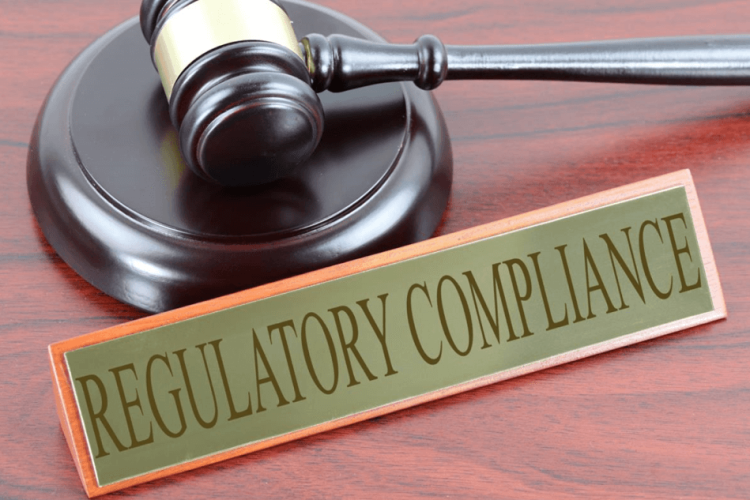Introduction
The rise of blockchain technology has brought about significant shifts in how we approach digital contracts and financial transactions. Smart contracts, self-executing contracts with the terms of the agreement directly written into code, have become the cornerstone of many decentralized applications (dApps), particularly in areas such as decentralized finance (DeFi), supply chain management, insurance, and more. However, as the technology evolves, so too does the need for compliance with existing financial and legal regulations.
In this article, we will explore how to design compliant smart contracts that meet regulatory requirements. We will examine the regulatory landscape surrounding smart contracts, identify key challenges, and provide practical guidelines for ensuring that smart contracts are legally sound, secure, and compliant with local and international regulations.
What are Smart Contracts?
A smart contract is a self-executing contract with the terms and conditions of the agreement between parties directly written into lines of code. It automatically enforces and executes contract terms when predefined conditions are met. The contract is executed on the blockchain, ensuring transparency, immutability, and security.
For example, in the context of a financial transaction, a smart contract could automatically release payment once both parties fulfill the contract’s conditions, such as delivering a product or service. Smart contracts can be programmed to execute automatically when certain conditions are met, reducing the need for intermediaries, minimizing human error, and increasing trust.
Benefits of Smart Contracts
- Automation: Smart contracts execute automatically once conditions are met, reducing the need for human intervention.
- Transparency: Since the contract is executed on a public blockchain, all parties can view the contract’s terms and conditions.
- Security: Blockchain technology provides strong cryptographic security, reducing the risk of tampering or fraud.
- Cost-Effectiveness: Eliminates intermediaries and reduces administrative costs.
While smart contracts offer these benefits, they also bring challenges when it comes to compliance with regulatory frameworks, especially when applied to financial services, real estate, or healthcare sectors.
Regulatory Landscape of Smart Contracts
As blockchain technology and smart contracts become more prevalent, regulators worldwide are working to establish frameworks that will help ensure compliance with existing laws. These frameworks aim to balance innovation and security, creating a stable environment for smart contract applications while protecting consumers and preventing financial crimes.
Some of the primary regulations that smart contracts must comply with include:
- Anti-Money Laundering (AML) Regulations: Smart contracts, particularly those used in DeFi, may be susceptible to abuse for money laundering and terrorist financing. Ensuring that smart contracts adhere to AML guidelines is vital for maintaining trust in blockchain systems.
- Know Your Customer (KYC) Requirements: KYC regulations require businesses to verify the identity of their customers to prevent illegal activities such as fraud, money laundering, and terrorist financing. Compliance with KYC is especially important for decentralized exchanges (DEXs) and financial contracts.
- Securities Regulations: The U.S. Securities and Exchange Commission (SEC) and other global financial authorities have clarified that many cryptocurrencies and tokens may be considered securities under existing laws. Smart contracts that deal with tokenized assets must ensure they meet the regulatory requirements for securities offerings.
- Data Protection Laws: With the increasing importance of General Data Protection Regulation (GDPR) in the European Union and similar privacy laws around the world, smart contracts that handle personal data must be designed to comply with these regulations.
- Contract Law: While smart contracts are self-executing, they must also comply with traditional contract law, including elements such as offer, acceptance, consideration, and mutual intent. Legal validity is essential for ensuring that smart contracts are enforceable.
Key Challenges in Designing Compliant Smart Contracts
While the legal and regulatory landscape is evolving, there are significant challenges in designing compliant smart contracts:
- Legal Recognition and Enforceability:
- One of the biggest challenges facing smart contracts is the question of legal recognition. While the code is executable and enforceable on the blockchain, the smart contract’s legal validity may be questioned in court, particularly if it conflicts with existing laws or lacks proper jurisdictional recognition.
- Different jurisdictions may have different laws regarding digital contracts, creating complexity for projects that want to deploy smart contracts globally.
- Regulatory Uncertainty:
- Blockchain regulations are still in the early stages in many countries. This uncertainty makes it difficult for developers to ensure that their smart contracts comply with the full range of potential regulations.
- Some countries may have no specific laws governing blockchain technology, while others may impose stringent restrictions.
- Security Risks:
- Security vulnerabilities in smart contracts can lead to exploitation, hacking, and fraud. For example, reentrancy attacks, integer overflows, and unpredictable gas usage have led to significant losses in the past.
- Regulatory bodies will require developers to follow certain security standards and guidelines to minimize the risk of these vulnerabilities being exploited.
- Complexity in Handling Off-Chain Data:
- Many smart contracts interact with off-chain data, such as price feeds, legal documents, or identity information. Ensuring the accuracy and legality of this off-chain data presents a compliance challenge. Oracles—external data providers that feed real-world data into smart contracts—can present issues of trust, reliability, and accountability.

Guidelines for Designing Compliant Smart Contracts
To address the challenges outlined above, here are some best practices for designing smart contracts that are both secure and compliant with regulatory frameworks:
1. Ensure Legal Enforceability
- Jurisdictional Considerations: Smart contracts should include clauses that specify the governing law and jurisdiction. This is crucial in cases where disputes arise, as the contract needs to be enforceable in a particular legal system.
- Legal Language Integration: While smart contracts are written in code, it may also be necessary to include legally recognized language in the contract’s documentation. This can help demonstrate the intent behind the contract and provide legal clarity.
- Hybrid Models: In some cases, a hybrid approach may be appropriate, combining traditional legal agreements with smart contract functionality. For example, using a traditional contract to outline terms and a smart contract to execute automatic actions under those terms.
2. Incorporate KYC/AML Compliance Mechanisms
- Onboarding with KYC/AML Checks: For smart contracts that involve financial transactions or the exchange of value, it is crucial to integrate KYC/AML checks to verify user identities and monitor transactions for suspicious activity.
- Use of Trusted Oracles for Identity Verification: Smart contracts can leverage trusted oracles to provide data feeds from KYC-compliant identity verification platforms, ensuring compliance with financial regulations without compromising privacy.
- Integrate KYC/AML at the Smart Contract Layer: In some decentralized applications (dApps), the KYC process can be built directly into the smart contract, ensuring that no action is executed without the necessary compliance checks being passed.
3. Security Measures
- Code Audits and Testing: Before deploying any smart contract, it is essential to conduct extensive code audits and testing. Engage independent third-party security firms to audit the code for vulnerabilities.
- Formal Verification: Formal verification tools can mathematically prove that a smart contract’s logic is correct and aligns with its intended purpose. These tools can help ensure the contract performs as expected and adheres to security best practices.
- Bug Bounties and Insurance: Developers can incentivize security researchers to find and report vulnerabilities by offering bug bounties. Additionally, smart contract insurance policies may help mitigate risks for users if vulnerabilities are discovered post-launch.
4. Comply with Data Protection Laws
- Data Minimization: Smart contracts should minimize the amount of personal data they store and process. Instead of storing sensitive personal information directly on the blockchain, developers can store hashes or encrypted versions of the data, ensuring privacy.
- GDPR Compliance: Smart contracts must be designed to be compatible with GDPR and other data protection laws. This includes enabling users to request the deletion of their data and providing them with transparency regarding how their data is being processed.
5. Smart Contract Upgradability
- Design for Upgradability: While smart contracts are immutable once deployed, it is often necessary to update or patch them after deployment. This can be done through proxy contracts or other upgradable contract architectures, which allow developers to make changes without losing the data or transactions associated with the original contract.
- Governance Mechanisms: For decentralized projects, governance mechanisms, such as decentralized autonomous organizations (DAOs), can enable the community to vote on upgrades or changes to smart contracts, ensuring that the contract evolves with user needs and regulatory requirements.
Conclusion
Designing compliant smart contracts is a complex but critical task that requires developers, regulators, and legal professionals to collaborate and understand the intricacies of blockchain technology, financial regulations, and contract law. By focusing on security, legal enforceability, regulatory compliance, and the ability to adapt to evolving laws, developers can create smart contracts that are not only efficient and innovative but also secure and compliant with global standards.
As blockchain adoption continues to grow across industries, ensuring compliance with regulations will be pivotal to the successful integration of smart contracts into mainstream applications. With careful design, adherence to best practices, and ongoing collaboration with regulatory authorities, smart contracts can realize their full potential while meeting the necessary legal and regulatory frameworks.
The future of blockchain technology is bright, and designing compliant smart contracts will play a crucial role in its continued success and adoption in the global economy.

















































